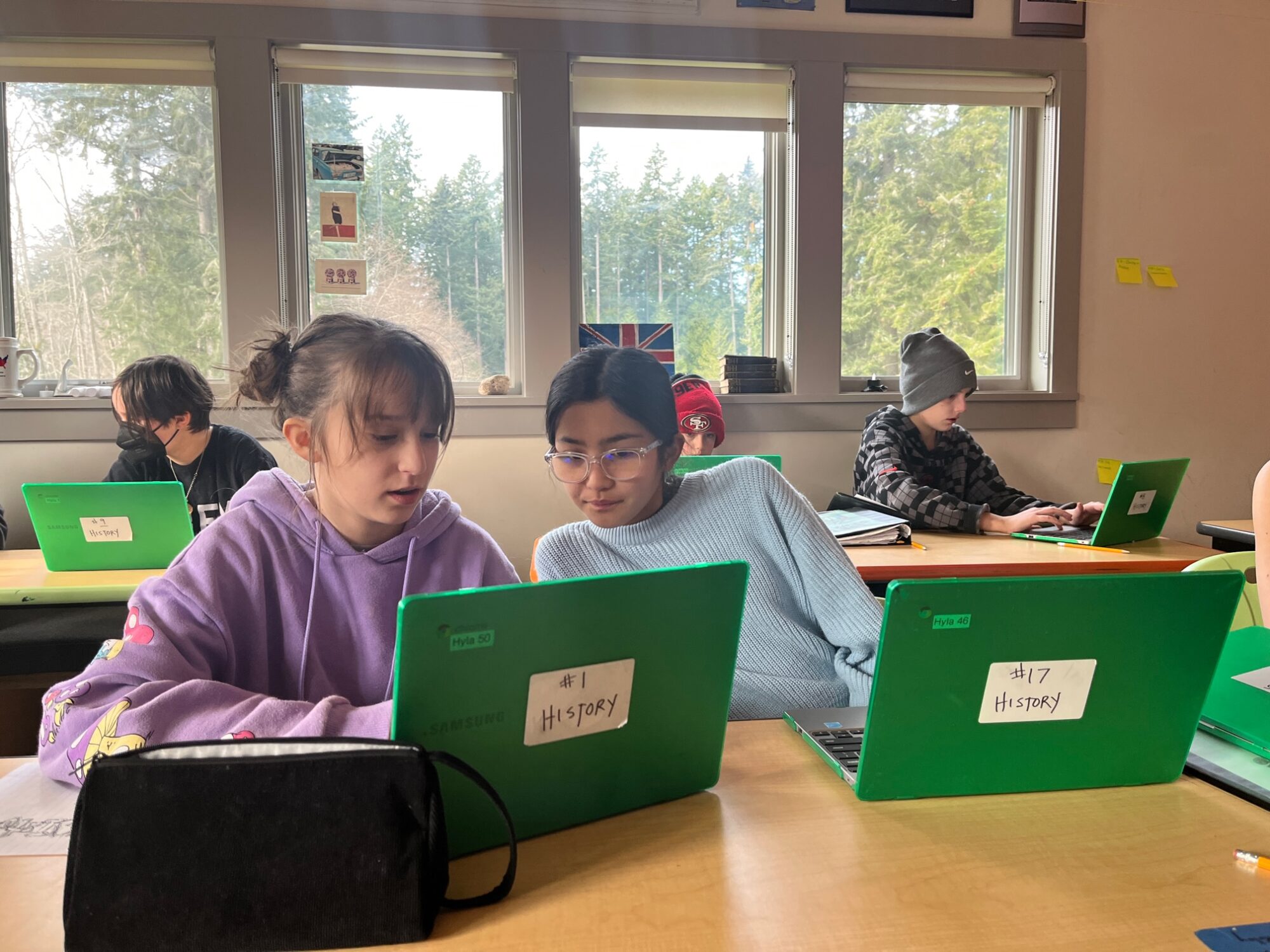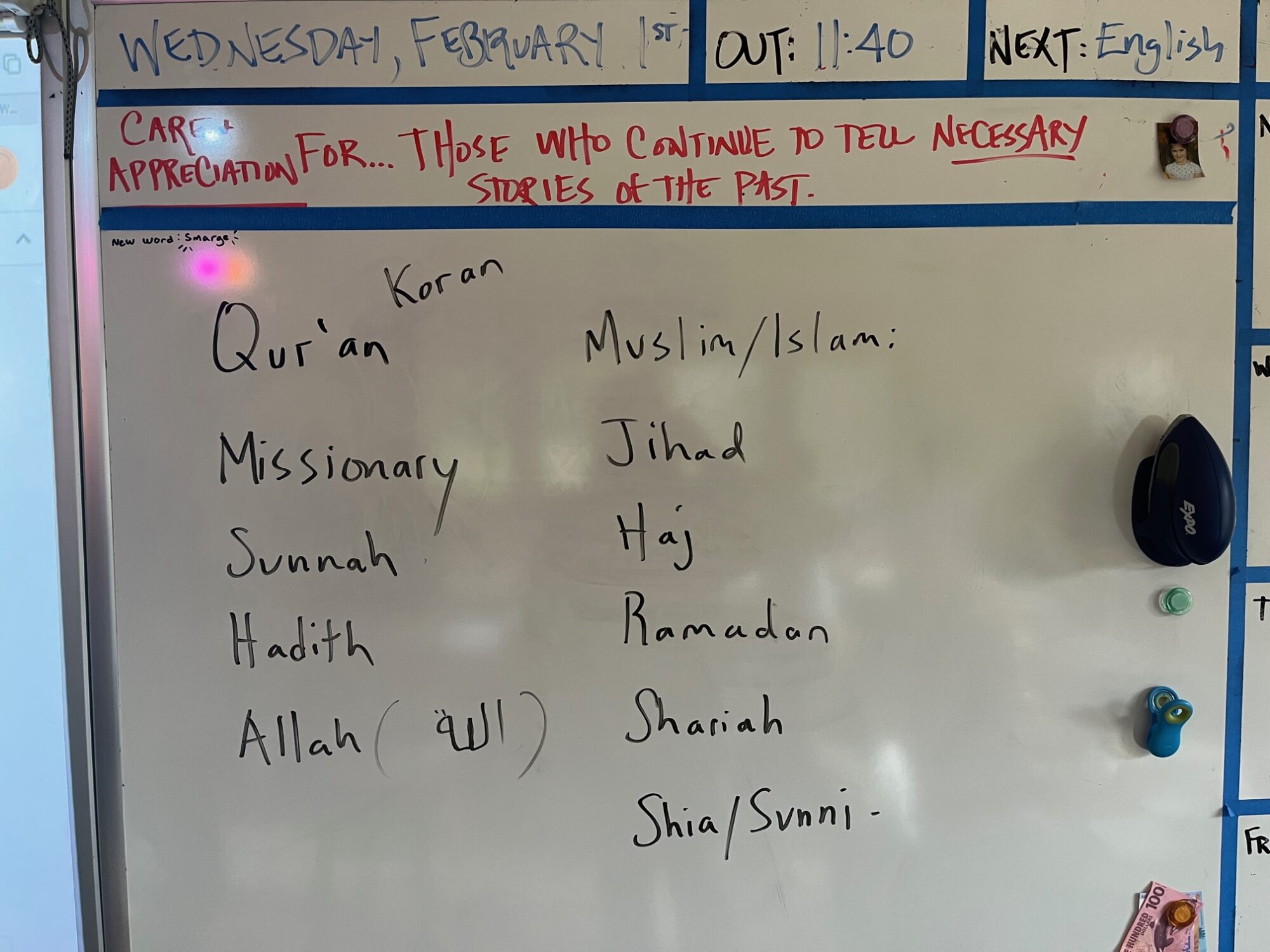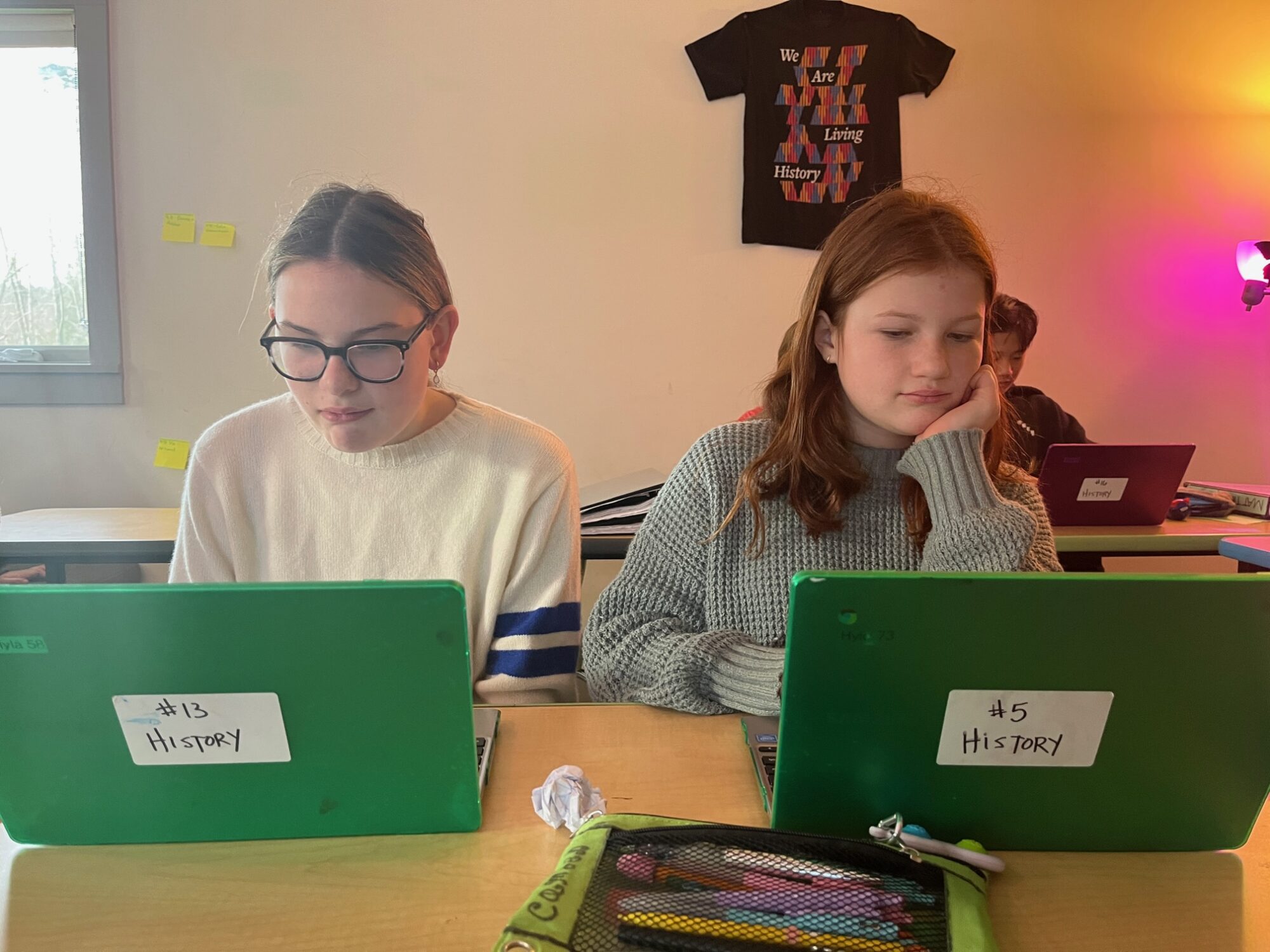Hyla Stories
Structuring Time: 7th grade history

—
7th grade history “is all about how we structure stories of time,” says David. But the words written across the white board in the history classroom tell you that history class with David is about a lot more than structures. It’s also about “Care & Appreciation for those who continue to tell necessary stories of the past.” This respect is fundamental to David’s approach, as is a sense of urgency: he wants students to see that the past not only shapes the present, it can also provide answers and help us navigate the choices we’re faced with in our own lifetimes. Here’s a look at some recent projects:
Imagining alternate endings
Diving into the structures of classical societies (Rome, Han, Gupta, and Maya), students explored the factors involved in the ultimate collapse of these great civilizations. To get to a deeper understanding of historical themes and consequences, David asks students to imagine alternate possibilities for these ancient societies by writing new “choose your own adventure” stories. With this format, students amplify critical decisions, like whether to build an aqueduct or elect a particular leader. “Instead of just retelling,” says David, “this allows students to imagine ‘what if?’” David adds that students are impressively fluent with this exercise: “Role playing games are really popular, so students are constantly confronted with choices and the ramifications of those choices in historical settings and history class is a perfect place for those skills.” David also knows that an understanding of collective action and consequences is essential to active citizenship.
Connecting actions to beliefs
From major civilizations, students move to another structure of human history, belief systems, with an exploration of the Abrahamic faiths: Judaism, Christinaity, and Islam. While looking at the message of Jesus and how it challenged the Roman Empire, David asks students to look at the message of Dr. King and how it informed his strategies and leadership within the civil rights movement. While studying Islam, David introduces students to Malcom X as an important example of how belief systems are integrated into political movements within African American history. Beyond studying different faiths, students begin to see how beliefs shape life paths and collective movements.
Practicing expertise
The unit on belief systems is also a chance for students to do one of their favorite things: “they really like to show what they know,” says David, “and the more they do it, the better they get and the more relaxed they get. So, we give them this chance as much as possible to help them get more and more comfortable presenting to others.” He adds that, “the further they get with historical analysis, the more they’ll rely on this skill.” Working in “expert groups,” students researched different pillars of Islam, the difference between Suni and Shiite. and other important distinctions within the Abrahamic faiths. They then shared their learnings to the larger group.
Developing academic independence
These group research projects prepare students for what David calls the “nitty gritty of history work, a research paper that culminates in another presentation to peers. “This is where students practice being independent academics,” said David. As they explore academic databases and sort through historical information, students “create a research paper that tells the story behind the questions they want to explore.” David explains that “student choice is absolutely imperative. I don’t pick for them, but I do get to say yes to what they bring. And they’ve chosen a wide range of topics within our area of study based on what interests them – like the foundation of gospels, Sikhism, and cults, to name just a few.” Driven by student interest, this project challenges students to ask their own questions, which David says “requires a real commitment to intellectual exploration – which is perfect for a 7th grader!” While they often begin with some nervousness, David encourages them to keep asking questions as he directs them to sources where they can find the answer. “There isn’t any one right answer with this project,” says David, “and the real work is about showing proof that they explored a topic as thoroughly as they could, gave it the due diligence needed to get to the essential facts about their topic, and then stood up in front of classmates to share their learning.”
All of this work builds toward the ultimate goal of David’s arc 7th to 8th grade history: academic independence that equips students for deeper analysis and more nuanced understanding in 8th grade and beyond.



